PLEASE NOTE: The information in this blog is for educational purposes only. It is not a substitute for professional medical advice. Consult your healthcare provider if you’re seeking medical advice, diagnosis, or treatment.
With the rush for convenience and constant bombardment from influencers pushing the newest health trend, it’s easy to forget that real food is often cheaper and more effective than your average supplement. Nutrient-dense foods are found throughout nature and can dramatically improve your health.
In this article, we’ll focus specifically on natural vitamin A foods and highlight why they’re so important for your health. This vitamin may not have the same fanfare as vitamin C or vitamin D, but it cannot be overlooked.
What is Vitamin A?
While you’re more likely to hear about vitamin C or vitamin D, vitamin A is incredibly important. Vitamin A is an essential nutrient that has various crucial roles in the human body, as it assists with (1, 2):
- Vision
- Reproduction
- Cell growth
- Immune function
- Fights free radicals
- Cellular communication
Despite it’s importance, vitamin A deficiency is a global challenge, impacting about 125 million people (3). At risk populations include infants, pregnant women, lactating women, and preschool children.
Vitamin A deficiency may result from liver disease, zinc deficiency, gut infections, and inadequate intake of vitamin A foods (4). Humans need to obtain vitamin A through dietary sources. Vitamin A deficiency is increasing in well-resourced countries due to selective eating (5, 6).
Deficiency in vitamin A can contribute to a variety of serious consequences, such as impaired vision, bone abnormalities, and immune disorders (7)
Thankfully, there are dozens of vitamin A foods to choose from.
Preformed vs Provitamin A: What You Need to Know
When choosing vitamin A foods, you’ll find options that fit into 2 categories: preformed and provitamin A.
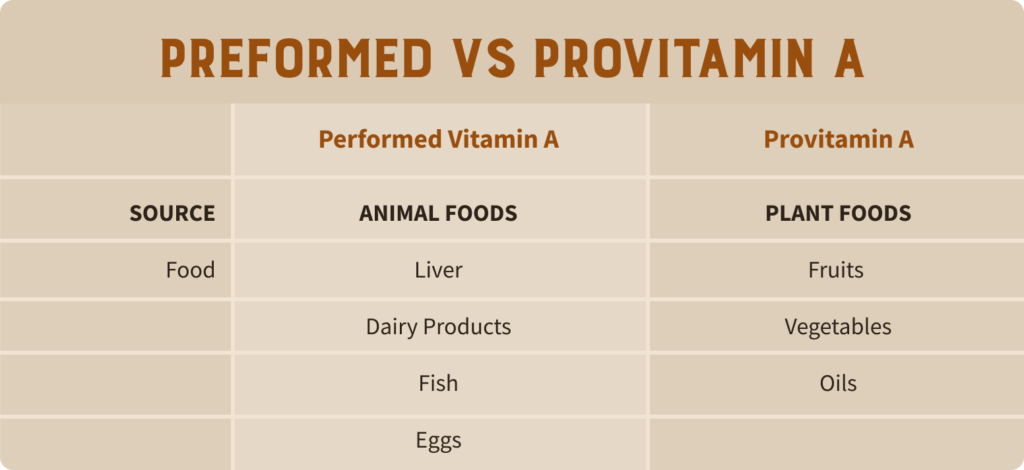
The first is preformed vitamin A (retinol and retinyl esters) found only in animal foods like organ meats, dairy products, fish, cod liver oil, and eggs (8). These sources of vitamin A are responsible for over 70% of daily intake in the United States and are often more bioavailable than plant sources (9, 10).
The second form of vitamin A is known as provitamin A (mainly beta-carotene and alpha-carotene) and is primarily found in colorful fruits and vegetables (11).
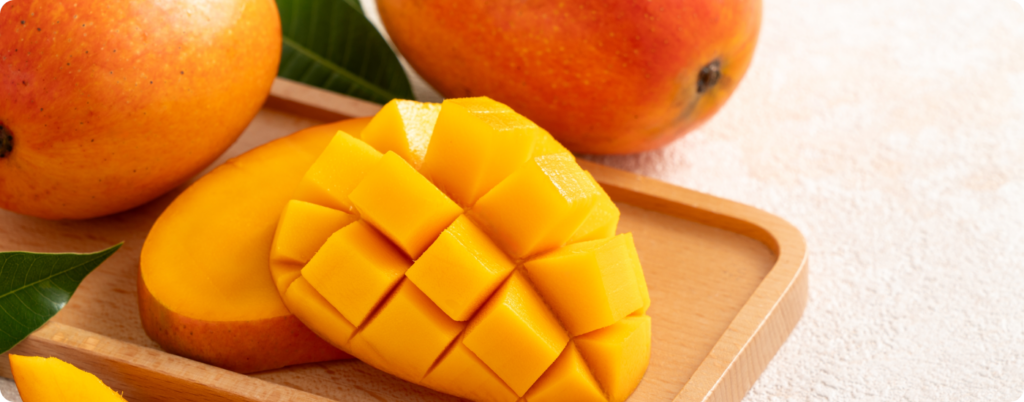
In humans, plant sources of beta-carotene are absorbed at a range of 7 to 65% (12). The bioavailability of provitamin A can be increased by cooking or other forms of heat treatment (13).
But what are the best vitamin A foods to add to your diet? Let’s take a look.
Preformed Vitamin A Foods
Preformed vitamin A is mainly found in the following animal foods (14):
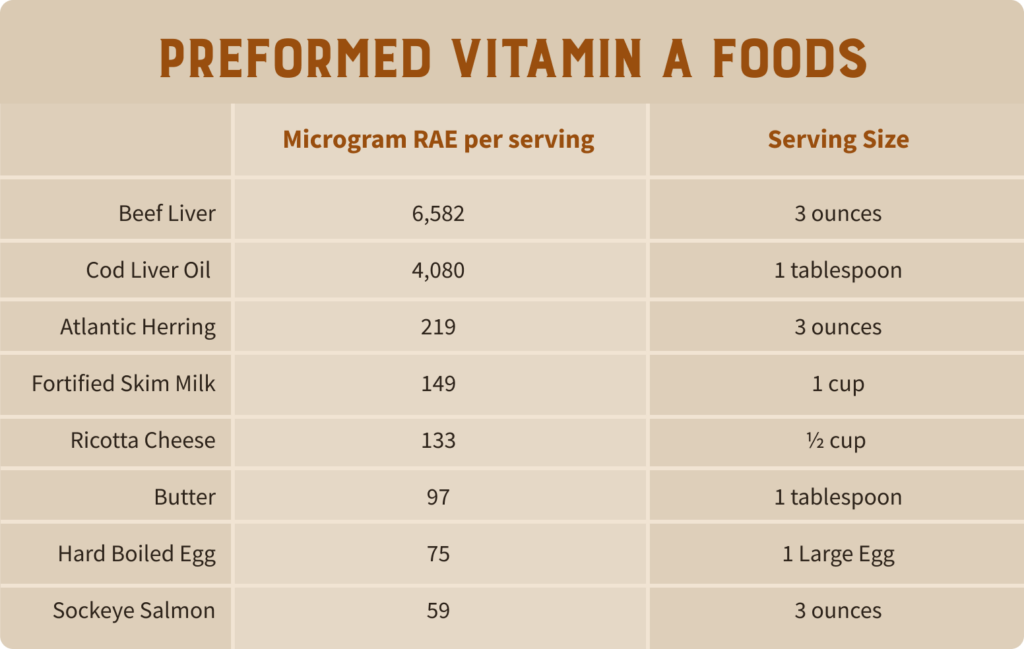
Not only are these some of the best vitamin A foods, but they also provide critical vitamins and minerals.
Beef Liver
Beef liver is known for its vitamin A content, and it also offers an impressive nutrient profile.
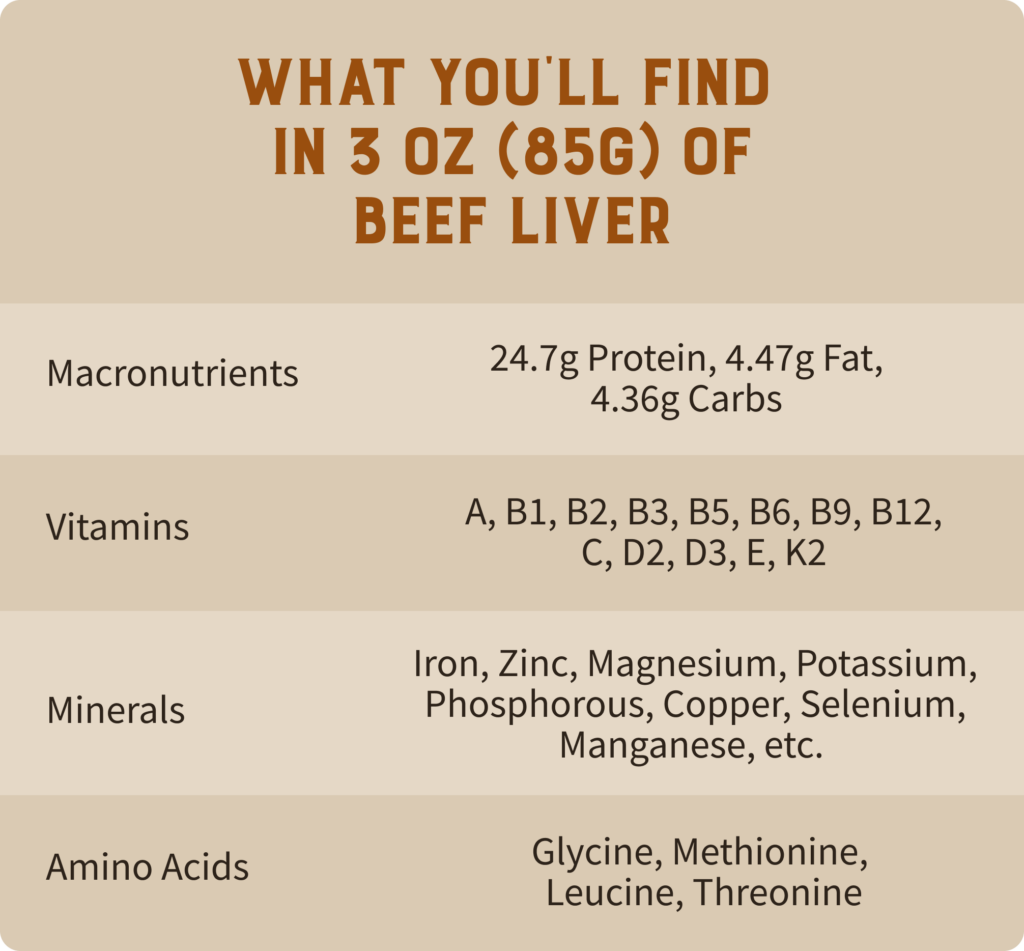
If you don’t have access to fresh beef liver or can’t stand the taste, Pure American Liver is a great option. Sourced from grass-fed cattle raised on American farms, it provides vitamin A, copper, and iron to support general health.
Cod Liver Oil
Known for its vitamin D content and ability to cure rickets, cod liver oil is also a valuable source of vitamins A and E, along with omega-3 fatty acids (15, 16).
Dairy Products
Milk products have been a staple in the human diet for centuries and provide nutrients like calcium, vitamin B12, omega-3 fatty acids, magnesium, and iodine (17, 18). Dairy is one of the most popular fortified foods, but it also naturally contains vitamin A.
Eggs

Another vitamin A rich food is eggs. Not only are eggs one of the few natural sources of vitamin D, but they also contain almost every vitamin except for vitamin C (19). Plus, eggs provide iron, iodine, calcium, copper, selenium, zinc, sodium, magnesium, and potassium (20).
Seafood
Salmon, herring, and cod liver are all important vitamin A foods. Similar to dairy products, eggs, and meat, fatty fish is a great source of B vitamins, vitamin E, and minerals like phosphorus, iodine, iron, copper, zinc, and selenium (21, 22).
Provitamin A Foods
Foods rich with provitamin A are mainly yellow and orange fruits or vegetables (23).

Even though these plant foods may not be as bioavailable as animal foods, they can still help boost your vitamin A intake (24).
How Much Vitamin A Do You Need?
Your vitamin A levels can be determined by a wide range of factors such as diet, alcohol consumption, and the status of your gut and liver health (25, 26). About 70% of vitamin A is stored in your liver, with smaller amounts found in other organs (27).
Based on your age group and sex, here’s the recommended dietary allowance for vitamin A from the National Institutes of Health (NIH)(28, 29):

Due to decreased consumption of animal foods, vegans or vegetarians may need to consume far more fruits and vegetables and closely monitor their micronutrient levels with a medical professional.
Like anything, exceeding the daily value of vitamin A may also lead to complications.
Vitamin A Toxicity: Should You Be Concerned?
Just as inadequate vitamin A can be problematic, so is excessive vitamin A.
Given that it is a fat soluble vitamin, the body can accumulate excessive amounts of vitamin A, potentially leading to acute or chronic Vitamin A toxicity (30, 31).
Acute vitamin A toxicity refers to the consumption of around 25,000 IU/kg in one sitting and can result in symptoms like nausea, diarrhea, vomiting, lethargy, and skin changes (32)
Long-term ingestion (6 to 15 months) of 4000 IU/kg or more of vitamin A can lead to chronic vitamin A toxicity. Symptoms such as yellowing skin, GI disturbances, anemia, anorexia, and joint pain may occur.
Toxicity is most frequently related to improper use of vitamin A supplements or consuming too much vitamin A from food sources (33). Despite the risk, vitamin A toxicity is not considered a public health concern and only leads to about 200 diagnoses per year (34).
Before reaching for a vitamin A supplement, it can be useful to work with a medical professional to better understand your current levels and health status.
Don’t Forget About Vitamin A Foods
Vitamin A rich foods are found throughout nature and are crucial for vision, immune health, skin health, and so much more. Yet, vitamin A deficiency is a global problem impacting over 125 million people, so it’s important to make sure you’re getting an adequate amount of vitamin A in your diet.
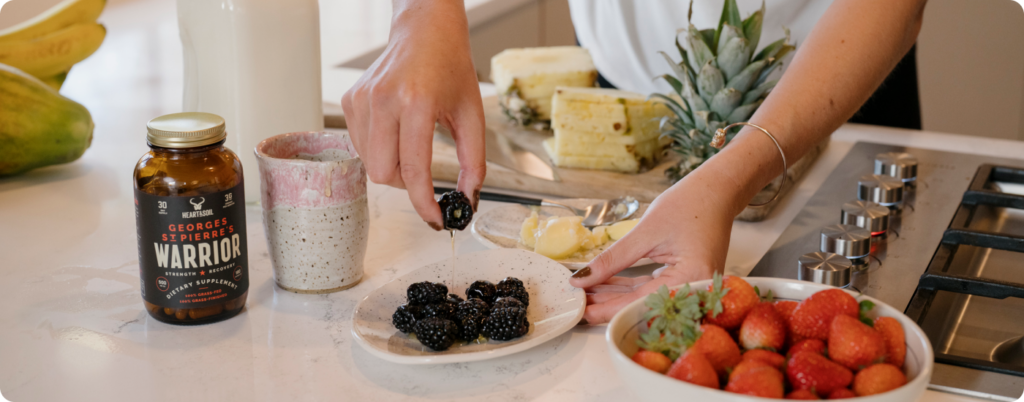
Like so many other nutrients, animal foods are an often overlooked but notable source of vitamin A. Including a variety of animal foods from dairy products, organ meats, eggs, and seafood can not only provide you with vitamin A, but also other critical nutrients that promote health and well-being.
Subscribe to future articles like this: